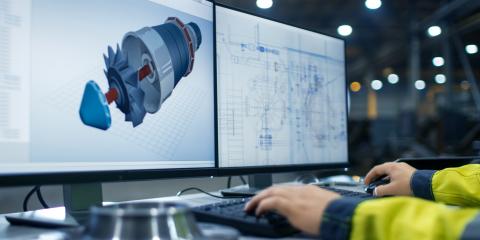The correct methods and tools to design more complex products

The correct methods and tools to design more complex products
Products are becoming ever smarter. This is a positive evolution but it does make the work of designers considerably more complex. During a webinar, research centre Flanders Make will explain how model-based methods and corresponding supporting software tools can help to enhance innovation and make it less expensive.
Technological progress raises the expectations of customers. Products must be able to do more, perform better, be easier to use and be optimally adaptable to changing conditions of use. Customers also set high requirements in terms of energy efficiency and recyclability to warrant acquiring efficient and sustainable products.
For the design team of a company, it is not easy to meet all these demands because such an optimisation requires taking into account an ever increasing set of criteria, both in terms of hardware, software and electronics. At the same time, they are under pressure to reduce the time-to-market.
Making the right choices
Fortunately, there are also more and more digital tools available to improve the effectiveness of the design process. These tools are not meant to replace designers and engineers but to support them in their struggle to cope with the increasing complexity of the product design process.
“Model-based methods and corresponding supporting software tools make it a lot easier for designers to make the right choices”, explains Paola Campestrini, cluster manager Design & Optimisation at Flanders Make. “This enables businesses to accelerate the production of solid high-quality prototypes, which – in term – will lower the time and costs that are needed to obtain a marketable product.”
Virtual representations
During a webinar of Flanders Make, organised on 14 May under the title ‘How to efficiently manage complexity in product design’, companies can learn more about specific solutions to these issues.
“We will show, amongst other things, how you can assess numerous features of new products using virtual representations without having to assemble a real physical object”, says Campestrini. “You can, for instance, generate multiple alternatives using the necessary digital tools and already assess, among others, the strength and stiffness of components as well as their assemblability.
Experts will also show how you can work more efficiently thanks to the co-design processes of control algorithms and embedded software and which optimisation techniques can be used to quickly study and assess the impact of multiple design parameters on product performances.
Accessible solutions
There are already a great many Flemish companies that benefit from the expertise of the Design & Optimisation cluster of Flanders Make. Campestrini emphasises that the suggested solutions are sufficiently accessible to be interesting for the broad range of companies in Flanders, from small SMEs to large multinationals.
